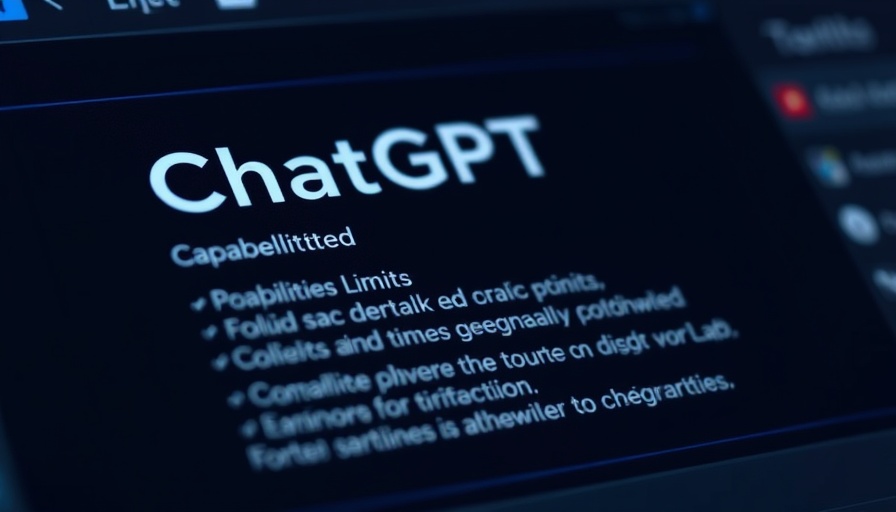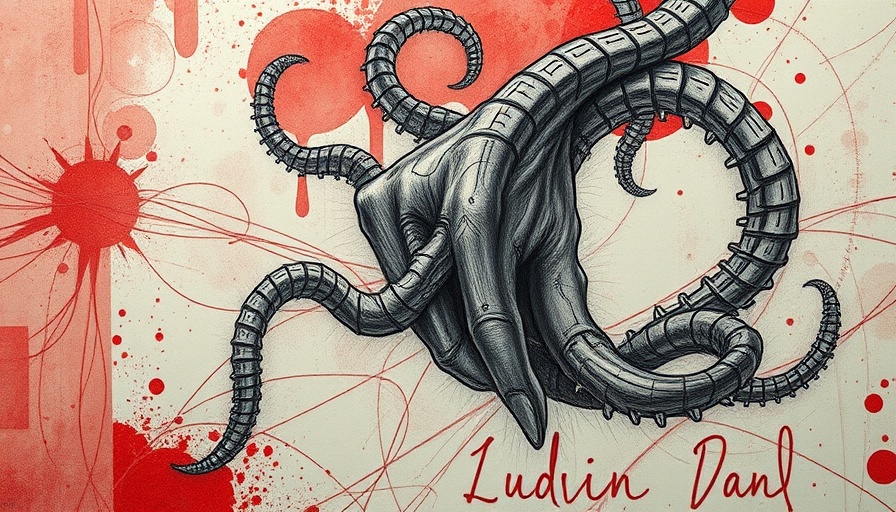
The Evolution of AI: From Text to Visual Mastery
The recent capabilities of OpenAI’s GPT-4o mark a fascinating era in artificial intelligence development, particularly in how AI interprets and generates visual content. The ability to generate a full glass of wine might seem trivial at first glance; however, it reflects critical advancements in AI’s conceptual understanding of the physical world. Historically, AI systems like previous iterations of ChatGPT faced challenges with tasks that humans consider straightforward. For example, generating images of full wine glasses revealed a significant limitation: their inability to conceptualize fullness in a manner analogous to human understanding.
Understanding the Wine Glass Problem
The 'Wine Glass Problem' illustrates a broader issue with AI training methodologies. Initially, AI struggled to generate images of a full glass of wine because most images in its training dataset showcased glasses that were either empty or partially full. As these systems predominantly rely on existing data, they often mirror the constraints of human observation, unable to conceptualize beyond the specific examples encountered. This inability signifies a gap between recognizing visual representations and understanding their deeper implications regarding physical properties.
Bridging the Gap: AI's New Capabilities
With the introduction of GPT-4o, OpenAI has made significant strides towards bridging this gap. The integration of text and image generation enables AI to contextualize and visualize concepts more seamlessly. As explained by OpenAI's team, this new technology reflects a paradigm shift, showcasing that AI can now grasp abstract ideas like fullness effectively. This progress aligns with ongoing trends where AI tools are designed to not only respond to direct queries but also understand the nuances of the inquiries better.
Social Implications: Why This Matters
The implications of this technology extend beyond the realm of creative tasks. For AI enthusiasts, the advancement is a substantial step towards more intuitive human-AI interactions. Improved image generation can enhance virtual assistance, educational tools, and creative applications, transforming how humans engage with technology. For instance, educators could leverage such capabilities to create interactive learning materials that visually demonstrate complex concepts, thereby facilitating better understanding among students.
Future Trends: AI's Learning and Creativity
As we consider the trajectory of AI technology, future advancements may focus on even more complex visual and sensory concepts. If AI continues to evolve its understanding of the physical world, we might see capabilities that allow it to generate images based on abstract feelings or sensory experiences, furthering the realm of creative expression. Such advancements could democratize creative processes, allowing individuals without artistic training to bring their ideas to life in visually stunning ways.
Counterarguments: Navigating Ethical Concerns
However, as with all technological advancements, there are counterarguments regarding their ethical implications. Areas such as data privacy and authenticity of image generation may come into play. The manipulation of images raises questions about ownership, originality, and even misinformation. As AI becomes adept at creating realistic visuals, distinguishing between genuine images and AI-generated content may become challenging, calling for new standards and models of regulation.
Conclusion: The Power of Understanding AI
The recent capabilities of AI image generation signify more than just technological improvement; they reflect a turning point in AI’s journey toward better understanding abstract concepts and sensory experiences. This breakthrough offers AI enthusiasts an opportunity to engage with dynamic creative tools while also challenging us to consider the ethical landscape of emerging technologies.
Understanding these advancements will equip followers with critical insights, fostering informed discussions about the present and future applications of AI. As we navigate this evolving landscape, harnessing AI responsibly will be paramount.
 Add Row
Add Row  Add
Add 




 Add Row
Add Row  Add
Add 

Write A Comment